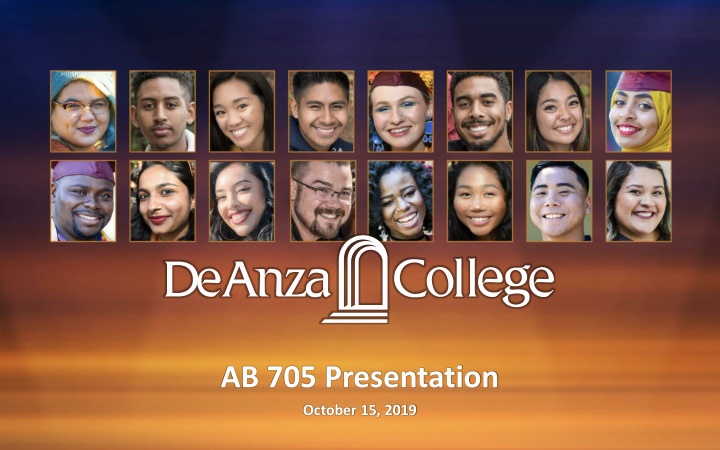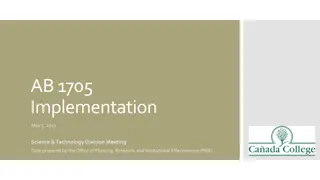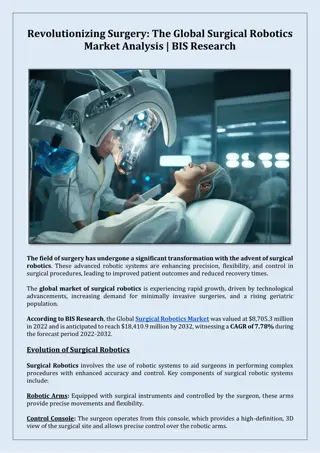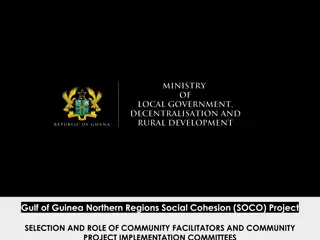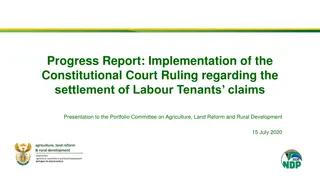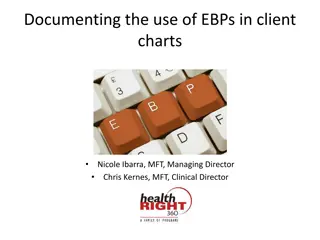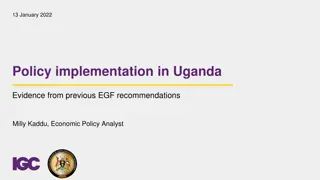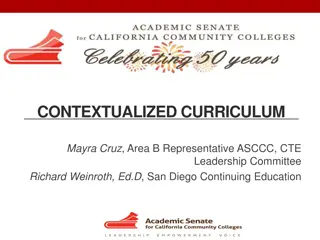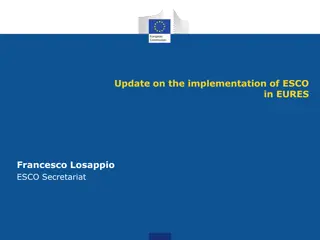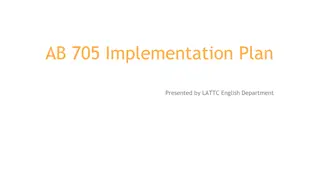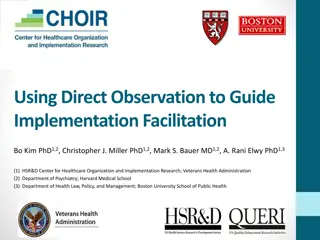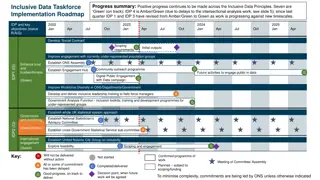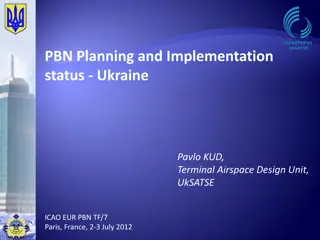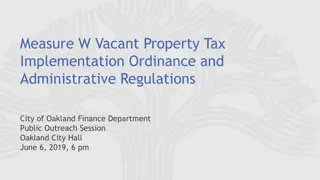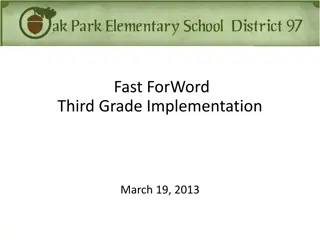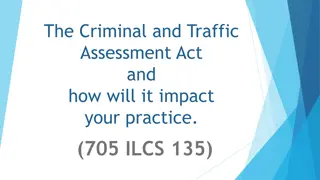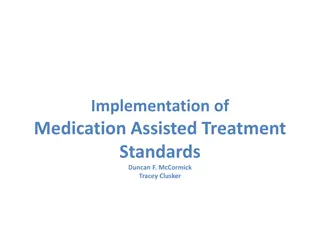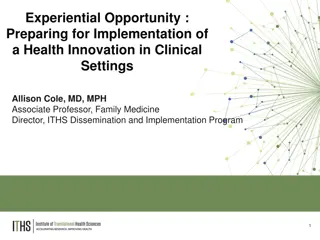AB 705 Implementation Progress and Impact Overview
Significant changes were made during the 2018-19 pilot phase for Math and English courses to align with AB 705 regulations. This included removing prerequisites, reducing basic skills sections, piloting bundled and stretch courses, and focusing on placing students based on GPA bands. Access and enrollment numbers saw an increase, along with successful completions. The data also reflects additional enrollments and successful completions by ethnicity, showing positive trends in Asian, Latinx, White, and African American student representation.
Download Presentation

Please find below an Image/Link to download the presentation.
The content on the website is provided AS IS for your information and personal use only. It may not be sold, licensed, or shared on other websites without obtaining consent from the author.If you encounter any issues during the download, it is possible that the publisher has removed the file from their server.
You are allowed to download the files provided on this website for personal or commercial use, subject to the condition that they are used lawfully. All files are the property of their respective owners.
The content on the website is provided AS IS for your information and personal use only. It may not be sold, licensed, or shared on other websites without obtaining consent from the author.
E N D
Presentation Transcript
AB 705 Presentation October 15, 2019
2018-19 Pilot Phase for Math and English Math - - - - Summer 2018: Removed all prerequisites to MATH 10 (Statistics) Fall 2018: Started placing students into MATH 41 (Precalculus) in the highest GPA band Began reducing Basic Skills sections, from 116 sections in 2017-18 to five in fall 2019 Began reducing Intermediate Algebra sections, from 93 sections in 2017-18 to nine in fall 2019 English - Fall 2018: Began placing students into EWRT 1A (English 1A) using the highest GPA band - Began piloting Bundled courses (EWRT 1A + corequisite) and Stretch courses (EWRT 1A over two quarters) - Reduced Basic Skills Reading sections from 107 sections in 2017-18 to zero in fall 2019 - Reduced Basic Skills EWRT sections from 104 sections in 2017-18 to one in fall 2019
Access and Enrollment 5,000 +856 4,530 enrollments over prior year 4,405 4,500 4,058 +1,326 enrollments over prior year 3,987 4,000 3,674 3,500 3,224 3,147 3,079 3,000 2,500 2,000 1,500 1,000 500 0 EWRT1A MATH10 2015-16 2016-17 2017-18 2018-19 Excludes summer terms. EWRT 1A includes courses linked to LART 20 sections. MATH 10 Includes all MATH 10 sections.
Successful Completions 5,000 4,500 4,000 3,482 3,482 +601 additional successful completions 3,500 3,281 3,281 +667 additional successful completions 3,082 2,881 2,881 2,825 2,825 3,000 2,500 2,158 2,158 2,141 2,141 2,139 2,000 1,500 1,000 500 0 EWRT1A MATH10 2015-16 2016-17 2017-18 2018-19 Excludes summer terms. EWRT 1A includes courses linked to LART250 sections. MATH 10 includes all MATH 10 sections. Successful completion is grade of A, B or C.
Additional Enrollments by Ethnicity Comparing 2017-18 to 2018-19 700 +608 600 500 +426 400 +357 +310 300 200 +155 +74 100 +60 +19 0 Asian Latinx White African American EWRT1A MATH10 Excludes summer terms. EWRT 1A includes courses linked to LART 250 sections. MATH 10 Includes all sections of MATH10. Native American, Pacific Islander, Filipinx, and Unknown not plotted.
Additional Successful Completions by Ethnicity Comparing 2017-18 to 2018-19 350 +327 300 +251 250 +231 200 +167 150 +96 100 +56 50 +32 +22 0 Asian Latinx White African American EWRT1A MATH10 Excludes summer terms. EWRT 1A includes courses linked to LART 250 sections. MATH 10 includes all sections of MATH 10. Native American, Pacific Islander, Filipinx, and Unknown not plotted.
Throughput Rates First Time Students Starting at Any Level who Complete Transfer Level in 3 Quarters 100% 90% 80% +11 70% percentage points 70% +22 62% percentage points 59% 57% 56% 60% 50% 40% 37% 37% 40% 30% 20% 10% 0% Transfer-Level EWRT Transfer-Level Math Fall 2015 Fall 2016 Fall 2017 Fall 2018 First-time students in each fall term, starting at any level and completing any transfer level EWRT or MATH course in three terms.
Throughput Rates First Time Students Starting at Any Level who Complete Transfer Level in 3 Quarters By Ethnicity English MATH First-time students in each fall term, starting at any level and completing transfer-level EWRT or MATH by spring.
Of students who passed MATH10 in fall 2018, what was their enrollment in other courses throughout the year compared to the prior year? 300 +284 250 200 +163 +146 +139 150 +90 100 +87 +68 +59 +57 +56 +50 +43 50 +35 0 EWRT1A HUMI1 PSYC1 COMM1 POLI1 BUS10 ASTR4 MATH41 ECON1 SOC1 ACCT1A ANTH1 ACCT1B
Of students who passed EWRT1A in fall 2018, what was their enrollment in other courses throughout the year compared to the prior year? 300 +259 250 200 150 100 +56 +52 50 +38 +27 +24 +22 +19 +13 0 EWRT2 MATH42 COMM1 HUMA10 HUMI1 MATH43 POLI1 PHIL3 PSYC1
Overall Changes - Students are placed primarily with high school transcript data self-reported and actual - Guided Self-Placement is available for English and Math, when students can t provide high school transcript data - Course sequences include corequisite supports in both English and Math - College websites, marketing, outreach materials and the catalog reflect changes to assessment and course structures and clearly describe students rights to take transfer-level English and Math courses and credit ESL courses
Math Department Focused one-level below courses Guided Self-Placement Corequisites The MPS program
Course Structures - MATH 10 (Statistics) - High School GPA - 3.0 and Above: MATH 10 without Support (5 units) - 2.3 2.99: MATH 10 (5 units) + MPS or MATH 210x (5 units) support course recommended - Below 2.89: MATH 10 (5 units) + MPS or MATH 210x (5 units) support course required - MATH 41 (Precalculus) - High School GPA - 2.6 3.9 OR Below 2.6 With High School Calculus: MATH 41 with support course recommended (5 units) - Below 2.6: MATH 41 (5 units) + MPS or MATH 231 (5 units) support course required
What we did Removed the prerequisite for Math 10 and Math 41 starting fall 2018 As concern for those who wanted to improve their skills before taking a transferrable course we developed two focused one level below transfer courses: Math 109 (pre stat) and Math 130 (pre-STEM) To support those taking transferrable courses we developed precalculus stretch model and corequisites for Math 10, Math 11, Math 41, Math 42. Our very successful MPS program expanded to support precalculus students in addition to Statistics students. (This was not a direct result of AB 705) We developed and implemented a Guided Self-Placement process which went live this fall
Faculty Thoughts Over the past year, our faculty team worked together to make sure the transition was as smooth and supportive for students as possible. Feedback from faculty teaching courses affected by AB 705 this fall include: Those teaching coreq classes are very positive that extra time and review of basic concepts is helping. Many faculty feel there is a much greater variation in student skills and background. Some see the variation not only in academic skills but also student-hood issues. Those teaching one of the two algebra classes feel students opting to take them are more motivated. Some observed students self-correcting their self-placement by taking a lower class Personal opinion: Faculty who teach statistics find effects of AB 705 much more positive than those teaching precalculus (STEM route).
English Department Just-in-time interventions Faculty collaboration and training Troubleshooting Positive attitude
Course Structures AB 705 created the opportunity to work in collaboration outside of our normal silos. Counselors, deans, staff, committees and faculty worked together to develop the best outcome for our students. There are now three pathways in English: 1. High school GPA greater than or equal to 2.6 = EWRT 1A standalone 2. High school GPA 1.95 to 2.59: EWRT 1A Bundled = EWRT 1A + LART 250 (3 unit corequisite) 3. High school GPA less than 1.9: EWRT 1A Stretch = EWRT 1AS (first quarter) + EWRT 1AT (second quarter). This is a combination of EWRT 1A + 5 units of extra help We still offer a few sections that are one level below EWRT 1A for students who wish to improve their skills before enrolling in EWRT 1A
Just-in-Time Interventions Supplemental Instruction: Working together to re-envision the Writing and Reading Center (WRC) for students Faculty and staff worked together in summer 2019 to create a menu of new directed learning activities for students. This was led by English instructor Julie Sartwell and Diana Alves de Lima and Victoria Khaler of the WRC. The group met over the summer to brainstorm about student needs in reading and writing, then developed activities and used peer editing to perfect them. The WRC created uniform documents and posted them on the Canvas web page. See more here: https://deanza.instructure.com/courses/9894
Faculty Training and Support The annual LinC (Learning in Communities) workshop held in summer 2019 provided an opportunity to share ideas, inspiring books, curriculum and activities and to focus on both the students as well as new EWRT 1A Bundled and Stretch courses. The workshop theme was: Reflection and Resiliency: Rocketing our Students to Success Elements included Boost with Best Practices Soar with Scaffolding Lift Off with Feedback Fire Up Your Students Success
Faculty Training and Support PAGE Meetings Monthly meetings for faculty members to discuss heartwarming moments of teaching as well as challenges, scheduling issues and plans for course offerings. Brown Bag Lunches Instructor Becky Roberts leads weekly meetings for Bundled and Stretch course faculty Agenda items include: Our first assignments: What went well and what would we change? Where do students need more support?
Portfolios English faculty member Brian Malone developed new portfolio expectations for EWRT 1A Bundled and Stretch courses. This is a work in progress that has drawn much faculty collaboration. Faculty members engaged in several workshops to discuss expectations and contents of portfolio. Faculty members participated in norming sessions to ensure expectations are aligned. All faculty members teaching Bundled or Stretch EWRT 1A participate in the portfolio reading at the end of the quarter, share essay prompts and read student portfolios to determine readiness for EWRT 2.
Opportunities and Next Steps Continue to work towards closing equity gaps Support ESL department with fall 2020 implementation Continue to evaluate and implement equitable supports Continue to provide ongoing support and professional development to faculty and staff Develop a comprehensive qualitative and quantitative research agenda to best understand student outcomes
